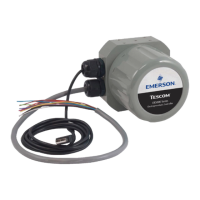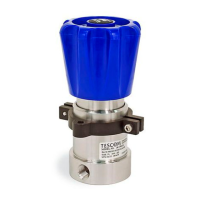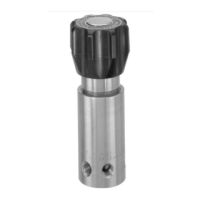ER5000 —
34
How It Works
If setpoint and feedback match, the controller generates a zero
error and does not activate.
If setpoint and feedback do not match, the controller generates
an error value (e), activates and sends an output to the system
to correct the error. For example, in the ER5000 the output is
directed to Solenoid Valves within the controller.
A positive error is generated when feedback is lower than setpoint.
The ER5000 responds to positive error by activating to increase
system pressure.
A negative error is generated when feedback is higher than
setpoint. The ER5000 responds to negative error by activating to
decrease system pressure.
The controller determines how much output to send by
summing two values:
• The Proportional term, which is the product of the generated
error and the constant Kp (the Proportional Constant).
• The Integral term, which is the product of the integral of all
accumulated errors and the constant Ki (the Integral Constant).
Control systems based on just the Proportional term or just
the Proportional and Integral terms, are known as a P and PI
congurations. The ER5000 can operate in a P or PI conguration
if this is appropriate for the application. The PID conguration,
which includes the Derivative term, offers the greatest level of
precision and exibility.
The Derivative term is often used to attenuate the feedback before
it is compared to setpoint. It is shown this way in Figure 2. The
Derivative of the feedback is multiplied by the constant Kd (the
Derivative Constant) and the resulting value is summed with
the feedback.
Because the Derivative is a function of the rate of change, its
primary function is to act as a damper and suppress oscillations as
the system approaches setpoint.

